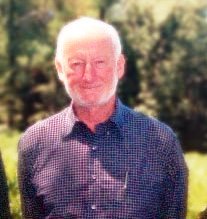1994 Philip Togni Cabernet Sauvignon Spring Mountain District California USA Wine Tasting Note
16427 Views
|
1994
Philip Togni Cabernet Sauvignon (Spring Mountain District)
Time in the cellar has certainly added a lot to this wine. At 26 years of age, and about 90 minutes in the decanter, it was easy to see that it has softened, filled out and added fabulous nuances of cedar, forest leaf, tobacco and blackberry. Long, full-bodied, round and crisp, I have completely changed my mind on this wine and I am thrilled to have a few more in my cellar. 4,354 Views Tasted Mar 10, 2020Some people are going to like this more than others including me. While powerful, dense and concentrated, its harsh, green and rustic in the drying, dark red berry finish. Wines like this are not about the quality, it’s a matter of style for most tasters. 3,567 Views Tasted Mar 4, 2014Full bodied, concentratred and tannic, this large scaled wine shows green notes and an austere personality. Big in size, if this is some tasters cup of tea, I'd prefer coffee. 5,980 Views Tasted Mar 28, 2010Big, concentrated mountain fruit. Still tannic. Needs time. The finish ended with a bitter, green note that took away from the ripe cassis and blackberry flavors. 2,526 Views Tasted Nov 2, 2004 |


Everything about Philip Togni Napa Valley California Cabernet Sauvignon wine producer profile, wine tasting notes, wine and food pairing tips, best vintages, history of the property, information on their wine making techniques, terroir and soil. You can also read about the Grapes used for California wine and learn about the extensive History of Napa Valley, California Wines
Philip Togni History, Overview
Philip Togni brings an international touch to the Napa Valley. He comes from England, studied wine making at the University of Bordeaux under the famous professor Emile Peynaud. Philip Togni moved to the Napa Valley in 1959. His first job was helping to plant vines at Mayacamas. Next, he became the wine maker at Chalone, Chappellet, Cuvaison, Gallo, Inglenook and Sterling before creating his own winery. In fact, Philip Togni was the wine maker at Chapellet when they made one of the top wines from the 1960's, the now legendary, 1969 Chapellet.
Philip Togni Vineyard was founded in 1975, when he purchased 25 acres high up on Spring Mountain, with elevations of 2,000 feet. It took a few years before the vineyard was planted, which took place in 1981. The vineyard was replanted in the early 1990's, due to problems with phylloxera vulnerable rootstocks.
The winery released its first vintage in 1983, a Sauvignon Blanc. Philip Togni no longer produces white wine. It took a few more years until the first Cabernet Sauvignon wines were produced at the estate. The debut vintage for Philip Togni was the 1985. The initial vintages of Philip Togni may have been been produced from pure Cabernet Sauvignon.
As you probably know, Philip Togni does not produce wines with high alcohol. The style of wines made in the Left bank of Bordeaux is after all, a big influence on the owner and the estate. But if you have ever spent time looking at their labels, trying to the find the level of alcohol content, without much success, there is a reason, it's not there! During the 1980's, the BATF allowed wineries to state their wine had the alcoholic strength of a table wine, which was about 7% to 14%. For wineries that have not requested to change their labels, those wineries are not forced to provide exact information. If their labels remain unchanged from their label during the 1980's, they are only required to state the wine is a table wine.
Philip Togni Vineyards, Wines, Winemaking
The vineyard, with its rock and clay soils rests at elevations of 2,000 feet. This is well above the fog line, which allows Philip Togni to harvest ripe fruit. The vineyard is planted to 82% Cabernet Sauvignon, 15% Merlot, 2% Cabernet Franc and 1% Petit Verdot. There is also a parcel of vines planted to Black Hamburg, which are used to produce a sweet, desert styled wine.
Philip Togni remains a family affair. The estate is managed by Philip Togni, his wife Brigitta Togni and their daughter Lisa Togni. In time, it is expected that Lisa Togni will take over managing the well respected estate.
Philip Togni produces 3 red wines.
Philip Togni Cabernet Sauvignon is aged in 40% new, French oak barrels for an average of 20 months before bottling.
Philip Togni Tanbark Hill, which is in essence the second wine from the estate, it's from a 3 1/2-acre parcel of young grape vines.
Philip Togni Ca’ Togni is sweet red desert wine that is produced from a grape that was popular in the Napa Valley before Prohibition, Black Hamburgh.
Philip Togni Cabernet Sauvignon is a big, powerful, tannic, wine made from ripe mountain fruit that can easily take a decade or two, and trust me, it is closer to 2 decades of aging before it's ready to drink. When California wine lovers claim they do not make them like they used to, have them taste a bottle of Philip Togni Cabernet Sauvignon.
Serving and Decanting Philip Togni with Wine, Food, Pairing Tips
Philip Togni wines are best served at 15.5 degrees Celsius, 60 degrees Fahrenheit. The cool, almost cellar temperature gives the wine more freshness and lift. Young vintages of their red wine can be decanted for 2-3 hours, depending on the character of the vintage. This allows the wine to soften and open its perfume. Older vintages might need very little decanting, just enough to remove the sediment.
Philip Togni is best served with all types of classic meat dishes, veal, pork, beef, lamb, duck, game, roast chicken, ribs, hamburgers, barbecue, roasted, braised, grilled dishes and stews. Philip Togni is also good with Asian dishes, hearty fish courses like tuna, salmon, mushrooms and pasta.

